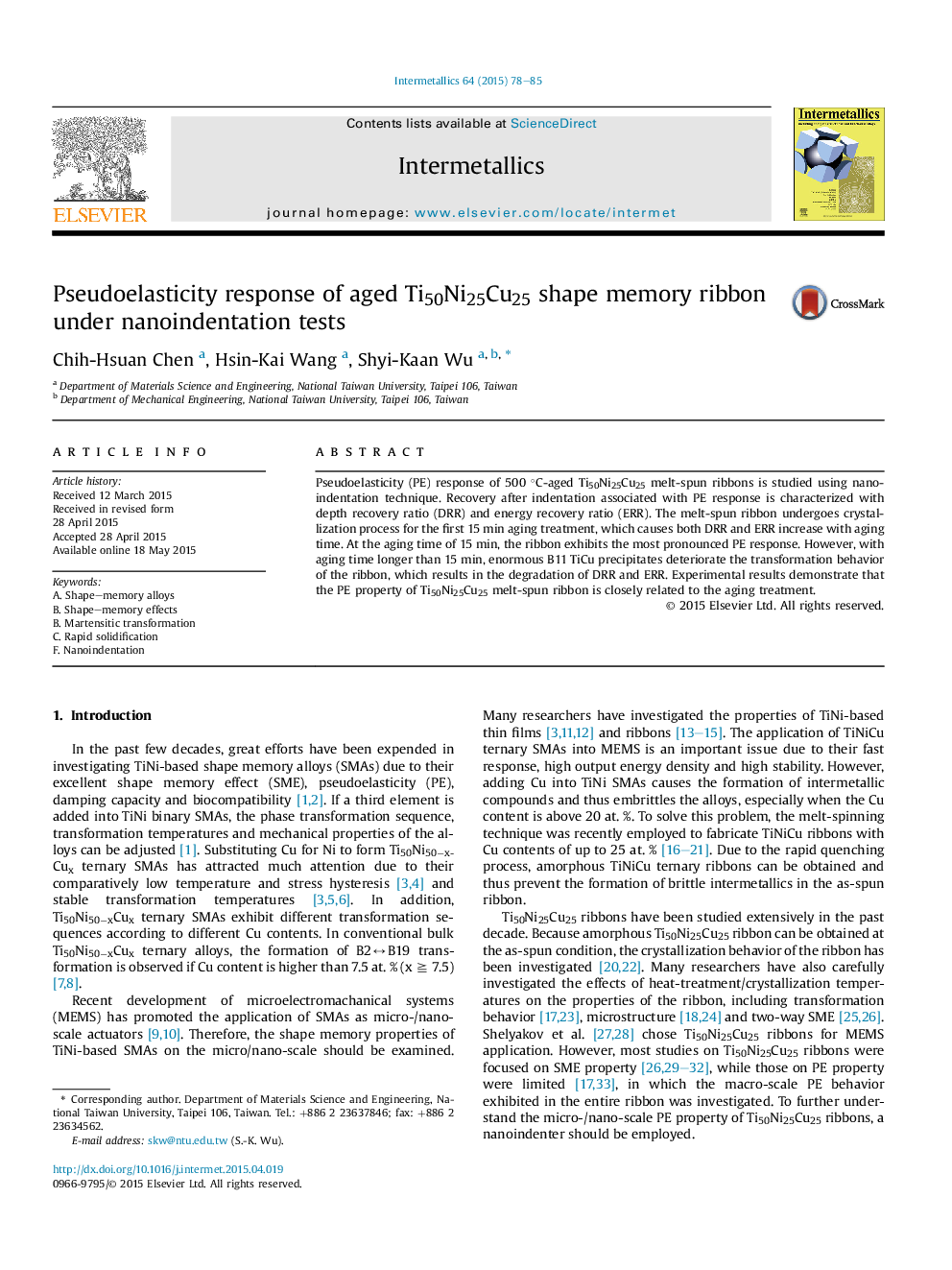| Article ID | Journal | Published Year | Pages | File Type |
|---|---|---|---|---|
| 1599840 | Intermetallics | 2015 | 8 Pages |
•Pseudoelasticity (PE) of aged Ti50Ni25Cu25 ribbons is studied by a nanoindenter.•PE responses are characterized by depth recovery ratio and energy recovery ratio.•15 min-aged ribbon is fully crystallized and exhibits the best PE response.•With aging time <15 min, residual amorphous volume causes poor PE responses.•With aging time >15 min, the PE responses are hindered by TiCu precipitates.
Pseudoelasticity (PE) response of 500 °C-aged Ti50Ni25Cu25 melt-spun ribbons is studied using nanoindentation technique. Recovery after indentation associated with PE response is characterized with depth recovery ratio (DRR) and energy recovery ratio (ERR). The melt-spun ribbon undergoes crystallization process for the first 15 min aging treatment, which causes both DRR and ERR increase with aging time. At the aging time of 15 min, the ribbon exhibits the most pronounced PE response. However, with aging time longer than 15 min, enormous B11 TiCu precipitates deteriorate the transformation behavior of the ribbon, which results in the degradation of DRR and ERR. Experimental results demonstrate that the PE property of Ti50Ni25Cu25 melt-spun ribbon is closely related to the aging treatment.
